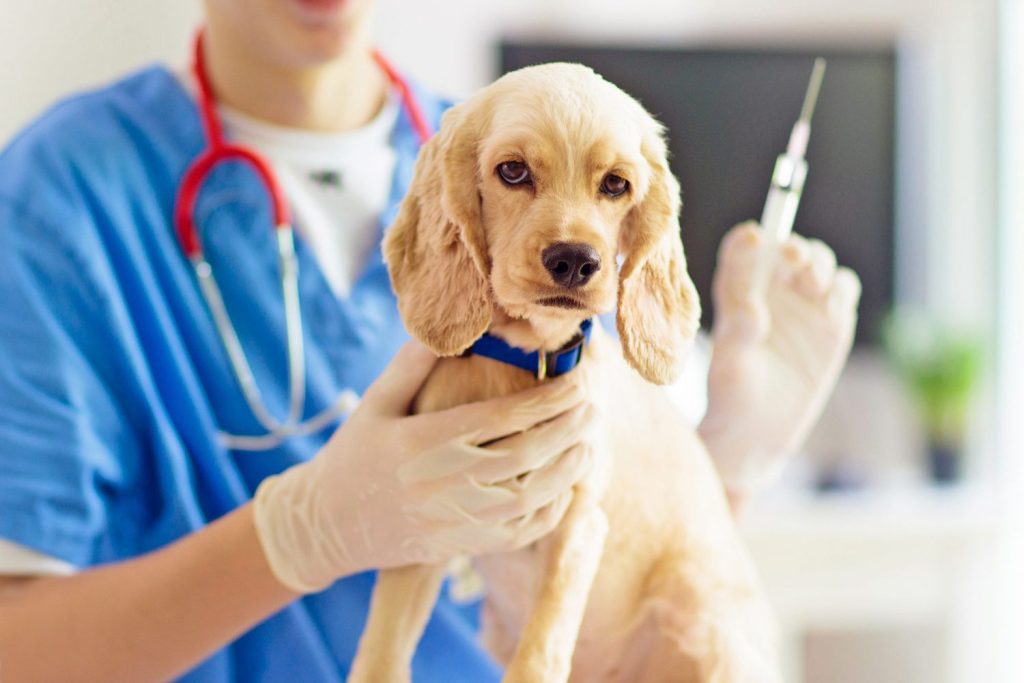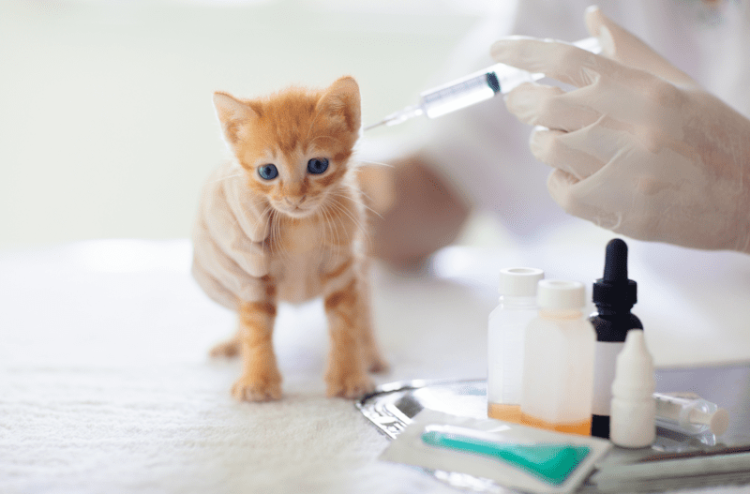Vaccinations play a pivotal role in safeguarding your pet’s health, preventing serious diseases, and ensuring they lead a long, happy life. Whether you’re a first-time pet owner or a seasoned one, understanding which vaccines are necessary and why they’re important is key to maintaining your pet’s well-being. In this article, we will break down the essential vaccinations that every pet needs, when they should receive them, and why they are so important.
1. What Are Pet Vaccinations and Why Are They Important?
Pet vaccinations are a preventive measure to protect your furry friend from contagious and potentially life-threatening diseases. Vaccines work by stimulating the immune system to create antibodies against specific pathogens, such as viruses and bacteria, that could otherwise cause illness. By vaccinating your pet, you’re not only protecting them from these diseases, but you’re also helping to reduce the spread of illnesses in the larger pet community.
Vaccines can prevent a wide range of diseases, from common conditions like parvovirus in dogs to more severe illnesses like rabies, which can be transmitted to humans. By staying up-to-date on your pet’s vaccinations, you’re taking proactive steps to ensure their health and the health of others.
2. Core vs. Non-Core Vaccines: What’s the Difference?
Not all vaccines are created equal. Vaccines can be categorized as core and non-core based on their necessity for your pet’s health.
2.1. Core Vaccines
Core vaccines are those that are recommended for every pet, regardless of their lifestyle. These vaccines protect against diseases that are highly contagious, widespread, and potentially fatal. Core vaccines are typically required by law in many areas, particularly those related to rabies.
For dogs, core vaccines include:
- Rabies: A deadly virus that affects the central nervous system and is transmissible to humans.
- Canine Distemper: A viral disease that affects the respiratory, gastrointestinal, and nervous systems.
- Canine Parvovirus (Parvo): A highly contagious viral infection that affects the intestines, causing vomiting, diarrhea, and severe dehydration.
- Canine Adenovirus (Hepatitis): A virus that affects the liver, kidneys, and eyes, often causing severe symptoms.
For cats, core vaccines include:
- Rabies: As with dogs, rabies is a highly contagious virus that is fatal if untreated.
- Feline Calicivirus (FCV): A respiratory virus that can cause upper respiratory infections and ulcers in the mouth.
- Feline Herpesvirus (FHV-1): Another respiratory virus that causes symptoms similar to a cold or flu.
- Feline Panleukopenia (Feline Parvo): A virus that attacks the digestive system, causing vomiting, diarrhea, and a low white blood cell count.
2.2. Non-Core Vaccines
Non-core vaccines are given based on your pet’s lifestyle, risk factors, and geographic location. These vaccines are not necessary for all pets but may be recommended by your veterinarian depending on your pet’s exposure to certain environments, other animals, or geographic regions where certain diseases are more common.
For dogs, non-core vaccines may include:
- Bordetella (Kennel Cough): A highly contagious respiratory disease common in places where dogs congregate, such as dog parks, boarding facilities, and grooming salons.
- Leptospirosis: A bacterial infection that can lead to kidney or liver failure, often transmitted through contact with contaminated water.
- Lyme Disease: Caused by ticks, Lyme disease can lead to joint pain, fever, and other systemic issues.
- Canine Influenza (Dog Flu): A contagious viral infection that affects the respiratory system and can spread quickly in crowded places.
For cats, non-core vaccines may include:
- Chlamydia Psittaci: A bacterial infection that causes respiratory issues in cats.
- Feline Leukemia Virus (FeLV): A virus that compromises the immune system and increases the risk of cancer. This vaccine is typically recommended for cats that go outdoors or interact with other cats.
- Feline Immunodeficiency Virus (FIV): A virus that weakens the immune system, similar to HIV in humans. This vaccine may be considered for outdoor cats at risk of exposure to infected cats.

3. When Should Pets Get Their Vaccines?
Vaccination schedules vary depending on your pet’s age, breed, and health status. However, there is a general guideline for when vaccines are typically administered:
3.1. Puppies and Kittens
For puppies and kittens, vaccinations usually begin at around 6-8 weeks of age. During this time, they receive their initial series of vaccines, which may include their first set of core vaccines, such as distemper, parvovirus, and rabies (depending on local regulations). These vaccinations are often given in a series, with booster shots every 3-4 weeks until they are around 16-20 weeks old.
3.2. Adult Dogs and Cats
Adult pets typically need booster vaccines every 1-3 years, depending on the type of vaccine and your pet’s risk level. Core vaccines like rabies and distemper are usually administered every 1-3 years after the initial puppy or kitten series. Non-core vaccines, such as Bordetella or Lyme disease, may need to be administered more frequently based on your pet’s exposure risk.
3.3. Senior Pets
Older pets may require additional care when it comes to vaccinations. Senior pets may have a weakened immune system, and their vaccination schedule may need to be adjusted. Your vet will determine the best course of action for maintaining your senior pet’s vaccinations and ensuring they stay protected against disease.
4. Are Vaccines Safe for Pets?
Vaccines are generally safe and have been rigorously tested to ensure their effectiveness. However, like all medical interventions, vaccines can have some side effects. These side effects are usually mild and temporary, such as:
- Lethargy: Your pet may feel tired or lethargic for a day or two after vaccination.
- Mild Swelling: Swelling at the injection site is common and should subside within a few days.
- Fever: Some pets may develop a mild fever as their immune system responds to the vaccine.
Serious side effects are rare but can include allergic reactions. If your pet shows signs of an allergic reaction, such as difficulty breathing, swelling, or vomiting, you should contact your vet immediately.
5. How to Prepare Your Pet for Vaccinations
Before taking your pet for a vaccination, it’s important to ensure that they are in good health. Some things to consider include:
- Check your pet’s health: Ensure your pet is not suffering from illness or stress, as this can affect how well they respond to the vaccine.
- Bring vaccination records: If you’re taking your pet to a new vet or need to update their vaccines, bring along any vaccination records to avoid duplicate vaccines.
- Keep your pet calm: For some pets, the vet visit can be stressful. Try to keep your pet calm by providing familiar toys or treats to help reduce anxiety.
6. Vaccinations and Pet Travel
If you plan to travel with your pet, vaccinations become even more important. Many countries and pet boarding facilities require up-to-date vaccinations before allowing pets to enter or stay. Common vaccination requirements for travel include rabies and distemper, depending on the destination. Always check with your vet well in advance to ensure your pet is up to date on all necessary vaccinations before traveling.
7. Conclusion: Keep Your Pet Protected with Vaccinations
Vaccinations are one of the most important ways to protect your pet from preventable diseases. By following your vet’s vaccination schedule and keeping your pet’s vaccinations up to date, you’re ensuring that they are protected from some of the most dangerous and contagious diseases. Consult with your veterinarian to create a tailored vaccination plan for your pet, and remember that prevention is always better than treatment.























































